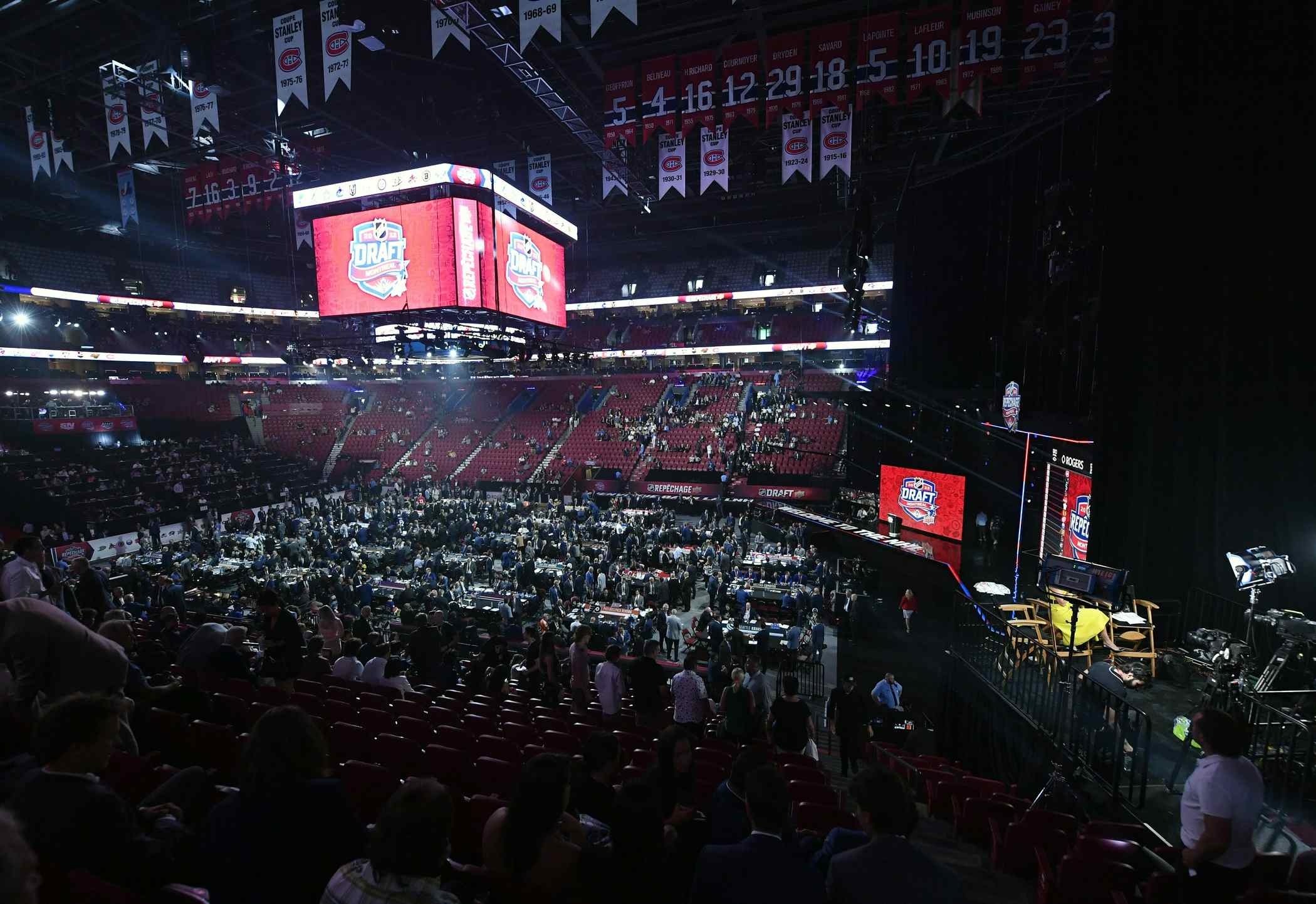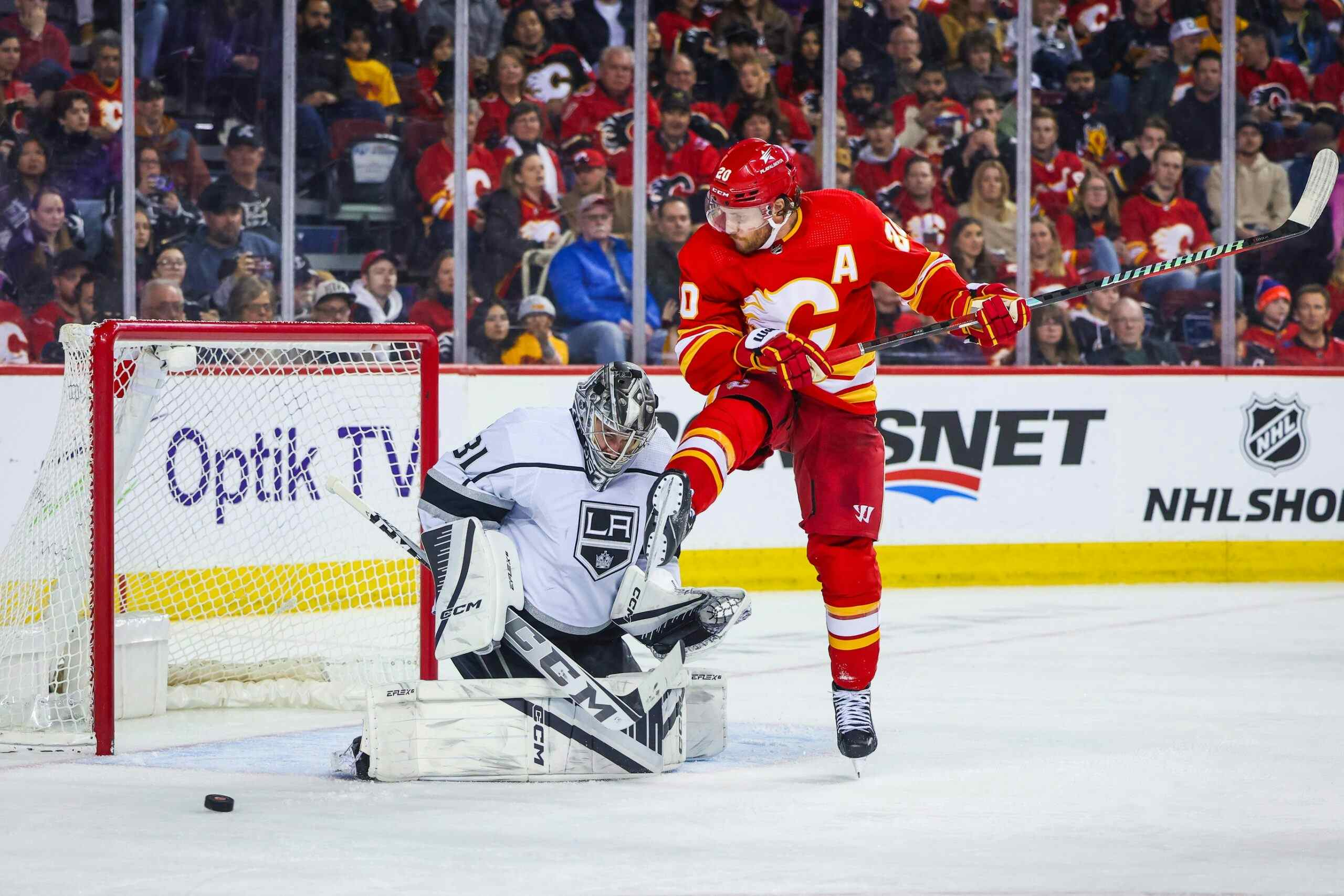Flames Prospects 2012-13 NHLE – February 27
By Kent Wilson
11 years ago
Another month, another round of NHL equivalencies. Things are starting to wind down, with many of the various other leagues entering the final quarter of the season give or take. That means we’re getting close to the final NHLE numbers for all of these kids this year.
Aside from a couple of stand-outs, it’s unfortunately been an inauspicious season for Flames prospects, at least by this measure. Converting output to an NHL translation has it’s uses but also it’s limitations, primarily because counting stats obviously don’t provide a complete picture of the player in question.
That said, outside of a few notable outliers (fighters, grinders and shut-down defenders), almost all future NHL skaters usually put up better than average offensive numbers during their junior/non-pro or lower pro careers. Heck, a lot of the kids who do score a lot nevertheless never end up making the show, so it’s a long road either way. Mediocre output just means it’s a little rockier too.
In short, it’s certainly not impossible for a guy to make the NHL if he manages only okay numbers at the lower levels. Sometimes kids can take a quantum leap forward netween seasons and start putting up the kind of results that catch the eye as well. But we’re talking about probabilities here and, by and large, skaters who don’t manage noteworthy NHLE’s leading up to the NHL either won’t make the show, or won’t put up useful numbers even if they make the cut anyways.
I’ve looked at these numbers for years now and have developed a bit of a rule of thumb for evaluating them (mostly for forwards):
45-50+ – Potential high-end scorer in NHL.
40-45 – Quality prospect, should contend for NHL job sooner rather than later.
35-40 – Very good prospect with ceiling ranging from 3rd to 2nd line.
30-35 – Good prospect, but probably with some question marks.
25-30 – Probably needs to significantly improve one or more areas of his game to realistically compete for NHL job down the road.
20-25 – Low-end prospect. Needs quantum leap forward or needs to be big, strong enough to be a grinder/fighter in NHL.
Below 20 – Not really a prospect.
The older a prospect, the truer these assesments become, since they are closer to their peak as they age. A kid like Mark Jankowski has a lot of room to improve his numbers and move up the ranks whereas Greg Nemisz at 22 years old has probably run out of road.
The Forwards
| Forwards | League | PPG | Translation | NHLE |
|---|---|---|---|---|
| John Gaudreau | NCAA | 1.37 | 0.41 | 46 |
| Bill Arnold | NCAA | 1.07 | 0.41 | 36 |
| Markus Granlund | SM-liiga | 0.57 | 0.54 | 25 |
| Roman Horak | AHL | 0.49 | 0.55 | 22 |
| Turner Elson | WHL | 0.88 | 0.30 | 22 |
| Coda Gordon | CHL | 0.87 | 0.30 | 21 |
| Paul Byron | AHL | 0.43 | 0.55 | 19 |
| Mark Jankowski | NCAA | 0.54 | 0.41 | 18 |
| Matt Deblouw | CCHA | 0.47 | 0.41 | 16 |
| Max Reinhart | AHL | 0.27 | 0.55 | 12 |
| Greg Nemisz | AHL | 0.17 | 0.55 | 8 |
He has slowed down recently, but as it has been all year, John Gaudreau still leads the pack by a fairly wide margin. Team mate Bill Arnold has put together a nice run recently and has actually closed the gap – a good indication given he’s a year older than Johnny G.
There isn’t much to talk about aside from those guys is the bad news. Markus Granlund is next in line, but it’s a steep drop off to an NHLE of 25. To put that in context, Markus’ older brother Mikael scored at a 1.13 point-per-game pace in the same league (on the same team) at the same age, which translates to an NHLE of 50. He’s currently a 4th liner on the Wild struggling to keep his head above water at even strength, which gives you some indication of the sort of progression Markus will have to experience in order to be a useful player to the Flames down the road.
Roman Horak charged out of the gates for the Heat but his production has slowed to a crawl since about November. He’s a guy who has some tools for sure, but at some point the production will have to be there too or else he’ll become another Dustin Boyd – a guy who consistently teases with potential, but never puts it together long enough to be anything more than a replacement level forward in the show.
Guys like Byron and Nemisz who are nearing their mid-20’s and can’t even crack an NHLE of 20 aren’t really prospects at this point. Jankowski we can put down as write-off for this season given his age and how poor offensively his team is. We’ll need to see a very real, very big step forward from him next year, though, to justify the Flames targeting him to the exclusion of other options in the first round last June.
Finally, Max Reinhart has had a very odd season. By all accounts he has played well and is rated highly by his coach, often deployed in a defensive role or matched up against the other teams best players. Despite that (or to some degree, because of that) his results are abysmal with just 15 points in 55 games and a team worst -23 (the next worst is Krys Kolanos at -12). Because we don’t have PDO/even strength percentages for the AHL we can’t know if Reinhart has suffered through especially bad luck this year, but that’s my gut feel when I look at the discrepancy between the numbers, his play and how he’s rated by the coaching staff.
That said, if Reinhart doesn’t rebound heartily next year and become a Heat team leader in every respect, then his stock will plummet in the org as well.
The Defense
| Defensemen | League | PPG | Translation | NHLE |
|---|---|---|---|---|
| Ryan Culkin | CHL | 0.71 | 0.29 | 17 |
| Tyler Wotherspoon | CHL | 0.66 | 0.30 | 16 |
| Brett Kulak | CHL | 0.59 | 0.30 | 14 |
| John Ramage | NCAA | 0.34 | 0.41 | 12 |
| Brady Lamb | AHL | 0.16 | 0.55 | 7 |
| Patrick Sieloff | CHL | 0.24 | 0.30 | 6 |
As mentioned previously in these articles, Calgary currently has zero high-end prospects on the back-end. Wotherspoon has had a big year as a 19/20-year old for the Portland Winterhawks, but some of that is attributable to the strength of the team and some to him being an older guy. Even with all that considered, Wotherspoon’s offensive output is relatively nominal. He’s a prospect of note given his performance in the WHL and world juniors, but his upside at the NHL level is more in the 3rd pairing, Cory Sarich type role than anything else.
Pat Sieloff has had a rough go in the OHL this year. He made the US gold winning WJC team as a younger guy (albeit in a 6th/7th defender type role) but his total lack of offense is somewhat discouraging, even if we stipulate he was never picked with that in mind. He has also been injured off-and-on during the season, derailing his development a bit. Sieloff is only 18 so there’s no rush to judgement here, but those aren’t great early returns.
The Goalies
| Goalie | League | SV% | rank |
|---|---|---|---|
| Jon Gillies | NCAA | 0.931 | 12th |
| Laurent Brossoit | WHL | 0.917 | 6th |
| Joni Ortio | SM-liiga | 0.917 | 9th |
I haven’t included puck-stoppers here before because we don’t have NHL translation factors for them yet, but I figure we might as well include their save rates and league ranks here anyways. Goaltending is the one area in the system the Flames have seen above average performances across the board this season, with all three guys becoming high-end starters for each of their respective leagues. Gillies arrived in Providence as something of an unknown freshman, but has established himself as the #1 there with authority, winning the gold medal on the US WJC team as a back-up to boot. If he can maintain or improve on this performance going forward, the Flames have a legit prospect on their hands.
Brossoit struggled out of the gate, but has been lights out the last month or two and is again one of the best ‘tenders in the WHL. He will turn 20 in March and will have the option of going to the AHL next season.
Joni Ortio is a bit of the forgotten man in the Flames goaltending mix, but he’s played the most games in the league in the SM-liiga (Finnish elite league) so far this season and is top-10 in terms of save rate amongst the guys who have played in 20+ games. He turns 22-years old in April, so is a little further down the road but not so old that we can’t say he won’t continue to improve the next few years.
Conclusion
A lot of fans I know are highly encouraged by Calgary’s recent draft choices, but it looks like the franchise still has a long way to go before it can claim the cupboards have been well stocked. The club has two bluechip or near bluechip picks in Baertschi and Gaudreau in the org for the first time in recent memory, which recommends the 2011 draft quite highly, but the depth behind them is questionable at best.
We still have to wait a long time before we know how good picks like Jankowski or Sieloff will be, but another heuristic of mine when it comes to grading prospects is you almost always know if they’ll be high-end guys after their draft+1 season. Occasionally you find relatively late bloomers who develop into average or better than average NHLers down the line (David Moss is an example from Calgary’s own ranks), but in most cases you start to see future NHLers outpacing their peers almost immediately.
With the exception of Gillies, none of Calgary’s 2012 picks did that this year.
Recent articles from Kent Wilson





